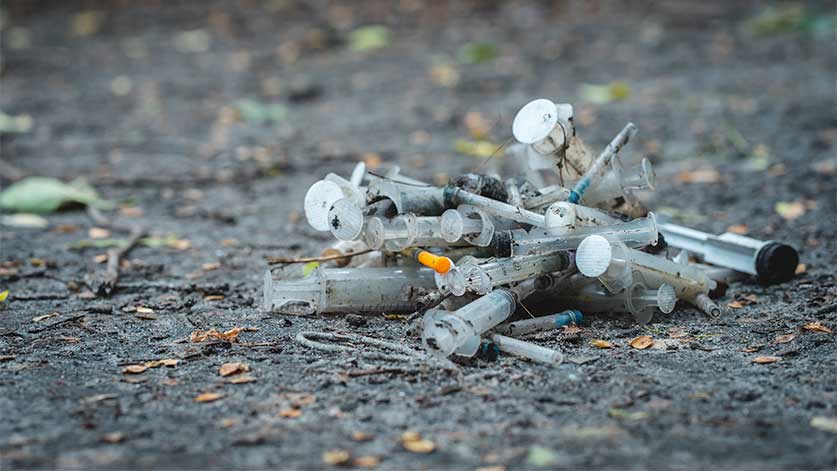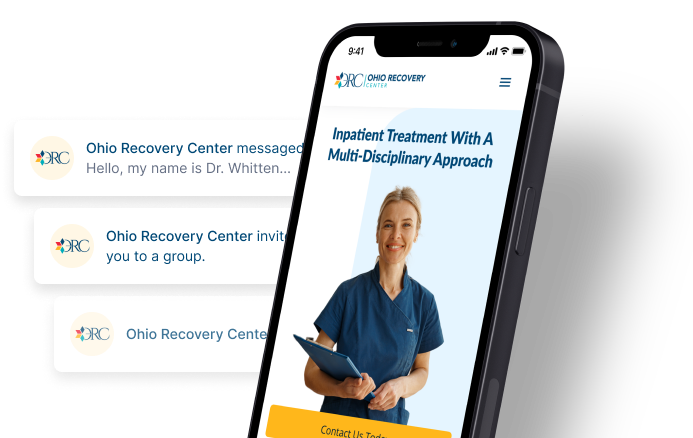Injection Drug Use | Substances, Signs, Dangers, & Treatment
Intravenous drug use is a common method of administration used by people who abuse illicit drugs. This method increases the person’s risk of contracting bloodborne disease and can increase the risk of overdose with certain substances.

While any form of drug abuse can be harmful, injecting drugs comes with especially severe short-term and long-term risks. Nevertheless, many Ohio residents participate in injection drug abuse to accelerate and enhance a drug’s euphoric effects.
In this respect, injecting drugs is similar to smoking and snorting drugs, though injection drug use is the single fastest route of administration. It’s also the one most likely to produce an intense and euphoric rush as the entire dose enters the bloodstream and takes effect almost immediately.
Drug injection primarily refers to intravenous/IV drug use, but can also include subcutaneous injection (“skin popping”) and intramuscular injection.
Commonly Injected Drugs Of Abuse
The most common drugs of abuse taken by injection in Ohio are:
- heroin
- fentanyl
- prescription opioids (morphine, hydrocodone, oxycodone, etc.)
- cocaine
- methamphetamine
- prescription amphetamines
However, a wide variety of other illicit drugs and diverted prescription drugs can also be abused through injection.
This is most common for water-soluble drugs of abuse that take a powder form, though pills and tablets of many different classes are sometimes also broken down, mixed with water, and injected into the body by those looking for a faster and more intense high.
Signs Of Injection Drug Use
There are many telltale signs that can suggest a person is abusing drugs through injection, including:
- patterns of bruising, pitting, and scarring around injection sites referred to as ‘track marks’
- injection drug paraphernalia like needles, syringes, spoons, cotton balls, water or alcohol, and makeshift tourniquets
- bloodshot eyes, pale skin tone, and other signs of fatigue
- frequent illness or unexplained absence
- a loss of interest in work, school, and other responsibilities or passions
- a noticeable decrease in one’s personal hygiene, dress, and self-care
- obvious changes in a person’s mood, mental health, and emotional well-being
- emotional withdrawal from friends and loved ones
- lack of energy and emotional presence during daily activities
- financial problems and unusual needs or requests for money
- changes in appetite, usually a decreased appetite and weight loss
- drug-seeking behaviors like theft, doctor shopping, or attempting to purchase drugs online or on the street
Dangers & Risks Of Injection Drug Use
Ohio residents who inject drugs are at an extremely high-risk for many serious and sometimes life-threatening health complications.
Health risks and dangers are further increased when injecting equipment is not properly prepared or sanitized, when needles are shared, when the drugs have unexpected potency, or when a person does not follow proper injection practices.
Skin Infections & Abscesses
“Dirty hits” happen when a person does not use a clean needle or sterile water, or uses contaminated drugs. This introduces viruses, bacteria, or fungi into the body, leading to preventable illness or infection.
Infections are very common in the skin at the site of the injection itself, resulting in an inflamed, red, pus-filled abscess as the body reacts. Abscesses can be treated by medical professionals but can lead to scarring, illness, and other serious complications if ignored.
Scarring & Track Marks
Abscesses and injection site wounds may also cause heavy, telltale scarring around the areas where a person has injected drugs. These track mark scars are often permanent and highly stigmatizing, only fading slowly with time after a person stops injecting drugs.
Infectious Diseases
Needle sharing and dirty hits can also cause a variety of serious infectious diseases, including endocarditis (an extremely life-threatening inflammation of the heart valves) and bloodborne infections like HIV/AIDs, hepatitis B, and hepatitis C.
Overdose
There is a significantly increased risk of overdose when a person chooses to inject drugs instead of taking them in some other way.
Not only is it easy to overestimate the size of a dose when preparing drugs for injection, but injection also intensifies a drug’s effects as it enters the body so swiftly and overwhelms its life-sustaining internal balance.
Other Chronic Physical, Mental, & Behavioral Health Problems
Along with financial stress, relationship issues, legal jeopardy, and other personal problems, opiate abuse and stimulant injection can also profoundly damage a person’s body and brain over time.
Common complications include:
- anxiety
- depression
- personality disorders
- memory problems
- sleep disorders
- malnutrition
- premature aging
- digestive problems
- deep vein thrombosis
- heart and lung issues
- dental issues
- compromised immune system function
- severe substance use disorder (drug addiction)
- premature death
Harm Reduction For Injection Drug Abuse
While there is no truly safe injection drug abuse, public health officials and advocates have recommended a variety of harm reduction strategies for safer injection, including:
- proper sterilization techniques and avoiding syringe reuse or sharing through needle exchange or syringe exchange programs
- proper syringe and bodily fluid disposal
- never using alone in case of overdose
- testing drugs for fentanyl
- keeping the opiate/opioid overdose antidote Narcan (naloxone) on-hand, available from local pharmacies
- learning proper injection protocols
- taking drugs in other, comparatively safe ways like plugging (rectal drug administration)
Addiction Treatment Options For Injection Drug Abuse
Those who inject drugs may develop severe forms of substance use disorder and require an intensive, evidence-based, personalized treatment program to promote effective and lasting recovery.
Common addiction treatment services that may be included in these plans include:
- inpatient medical detoxification to manage the withdrawal process
- inpatient rehabilitation services
- intensive outpatient services
- cognitive behavioral therapy and other forms of behavioral therapy
- dual diagnosis therapy for co-occurring mental health disorders
- medication-assisted treatment using methadone, buprenorphine, or naltrexone
- peer support
- aftercare support
Ohio Recovery Center
If you or your loved one struggle with substance abuse, we can help. Ohio Recovery Center is a leading addiction treatment and primary mental health provider located in Van Wert.
Our residential services and compassionate healthcare providers will give you the support and guidance you need to carry your recovery through the rest of your life. Contact us today to get started.
- Mayo Clinic https://www.mayoclinic.org/diseases-conditions/drug-addiction/symptoms-causes/syc-20365112
- National Harm Reduction Coalition https://harmreduction.org/issues/safer-drug-use/injection-safety-manual/potential-health-injections/
- National Institute on Drug Abuse (NIDA) https://nida.nih.gov/publications/drugfacts/drug-use-viral-infections-hiv-hepatitis
- Semel Institute for Neuroscience and Human Behavior https://www.semel.ucla.edu/dual-diagnosis-program/News_and_Resources/Potential_Complications_Of_IV_Drug_Use
- Substance Abuse and Mental Health Administration (SAMHSA) https://www.samhsa.gov/find-help/harm-reduction

